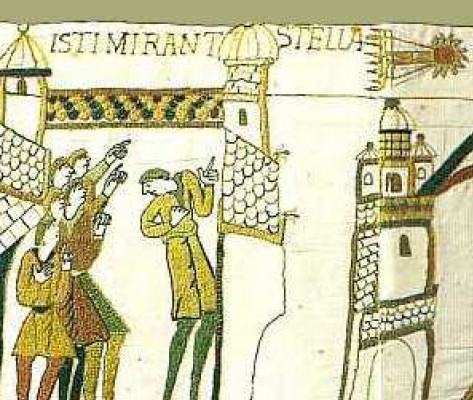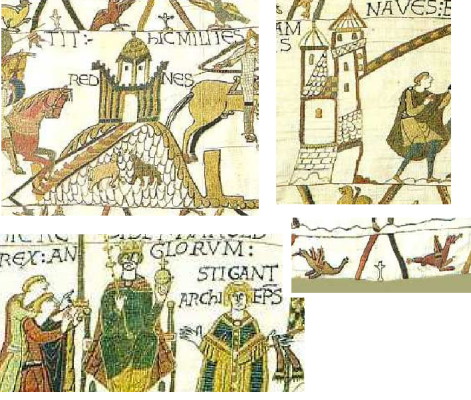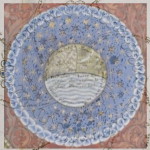French connection
After a period of rest (working on some on other projects) i stumbled upon
https://voynichology.wordpress.com/page/2/
Where a reference was made that is very interesting:
Ellie Velinska pointed out a drawing in Nicole d’Oresme’s Livre du ciel et du Monde (1377) that looks very much like the “nebula” on f68v3.
I followed the “Nicole D’Oresme” information and came to the “Bayeux est une commune française du département du Calvados et de la région Basse-Normandie”
see also “wolkenbands”
Bayeux (Bagias) has a very interesting Bayeux Tapestry with some very interesting features!
The tapestry was created by the Bayeux artists, circa 1070.
I mention:
- the stones of the buildings
- stuff that is presented to the king resembles the (globus cruciger, crown and scarf)
- animals are drawn as bad as the zodiacs
- small dragons, and mythical figures, nude men…
- the many tituli (link) used may have also been used in the Voynich (http://en.wikipedia.org/wiki/Bayeux_Tapestry_tituli)
- insti mirant stella
- Halley’s Comet‘s appearance in 1066 was recorded on the Bayeux Tapestry. ISTI MIRANT STELLAliterally means “These ones are looking in wonder at the star”.National Geographic translated it in a 1966 article about the tapestry as “These men wonder at the star.”
- A star with a streaming tail appears: Halley’s Comet. Comets, in the beliefs of the Middle Ages, were a bad omen
 |
 |
Halley’s comet
I thought that probably many people investigated the comet in relation to the VMS.
However, i coul not find a serious attempt.
Halley’s comet appearances: …10 November 1378. 9 June 1456. 26 August 1531. 27 October 1607…
(http://en.wikipedia.org/wiki/Halley%27s_Comet)
In 1456, the year of Halley’s next apparition, the Ottoman Empire invaded the Kingdom of Hungary, culminating in the Siege of Belgrade in July of that year. In a Papal Bull, Pope Calixtus III ordered special prayers be said for the city’s protection.
In 1470, the humanist scholar Bartolomeo Platina wrote in his Lives of the Popes that,[71]
A hairy and fiery star having then made its appearance for several days, the mathematicians declared that there would follow grievous pestilence, dearth and some great calamity. Calixtus, to avert the wrath of God, ordered supplications that if evils were impending for the human race He would turn all upon the Turks, the enemies of the Christian name. He likewise ordered, to move God by continual entreaty, that notice should be given by the bells to call the faithful at midday to aid by their prayers those engaged in battle with the Turk.
Platina’s account is not mentioned in official records. In the 18th century, a Frenchman further embellished the story, in anger at the Church, by claiming that the Pope had “excommunicated” the comet, though this story was most likely his own invention.[72]
Halley’s apparition of 1456 was also witnessed in Kashmir and depicted in great detail by Śrīvara, a Sanskrit poet and biographer to the Sultans of Kashmir. He read the apparition as a cometary portent of doom foreshadowing the imminent fall of Sultan Zayn al-Abidin (AD 1418/1420-1470).[73]
After witnessing a bright light in the sky (which most historians have identified as Halley’s Comet, visible in Ethiopia in 1456), Emperor Zara Yaqob, ruler from 1434 to 1468, founded the city of Debre Berhan (tr. City of Light) and made it his capital for the remainder of his reign.[74]
![]()

